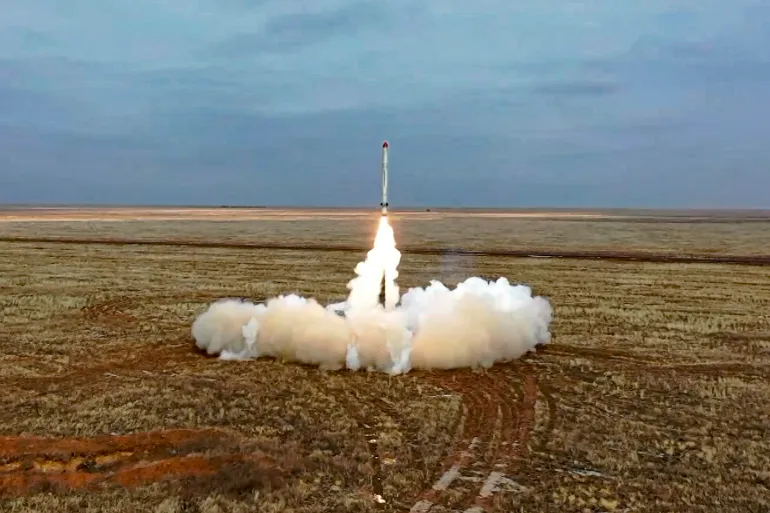By: Hunter Ding
On June 28, 2024, Vladimir Putin, president of Russia, declared that Russia would be producing new intermediate-range nuclear missiles and deciding whether to station them within range of NATO countries. He was fairly vague in his threat: he did not say anything about timelines for deploying the weapons, and implied that he was open to negotiations. He also claimed that this move was as a result of blamed ing the United States for bringing similar missiles in military exercises in Europe and Asia.
However, his timing was critical, as he made the announcement just as major elections commenced in Britain and France, and days before the 75th anniversary Washington NATO summit on July 9, 2024. This latest attempt to raise the stakes in the West came two weeks after Putin’s visit to North Korea, and it rattled nerves in the United States as well as among other American allies in Asia.
The Pentagon has taken the steps to deploy some intermediate-range weapons in Asia, intended to counter an increasing large Chinese nuclear force, which has also become a concern for Americans. However, none have been permanently redeployed in Europe. In brief, televised remarks, President Putin cited recent military exercises in Denmark and suggested the United States was preparing to leave weapons there and commented that there would be a response from Russia.
In the Cold War era, such missiles were a centerpiece of the Soviet Union force. But in the early 1990s, the United States and the Soviet Union removed some of their nuclear missiles from Europe to reduce tensions. However, a decade ago, Putin reversed that agreement, deploying missiles to Kaliningrad, the Russian region closest to the Western European cities. This was charged by the Obama Administration to be in violation of the Intermediate Nuclear Forces treaty.
This was not the first time that Putin used his threat of nuclear weapons to gain leverage in his war with Ukraine. The war began on February 20, 2014, and since the war began, “the U.S. Congress has voted through five bills that have provided Ukraine with ongoing aid, doing so most recently in April 2024. The total budget authority under these bills—the ‘headline’ figure often cited by news media—is $175 billion (Council on Foreign Relations, cfr.org)”. The U.S– and other European countries– have limited themselves to providing aid only, but Putin warned on March 13, 2024, that Russia was “technically ready” for nuclear war and if the U.S. sent troops to Ukraine, then it would be considered a significant escalation of the war.
In any case, Russia and Putin have been tense subjects, and with their sizable nuclear arsenal and war in Ukraine, one misstep could send the house of cards tumbling.











